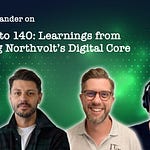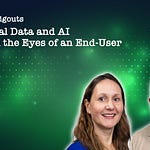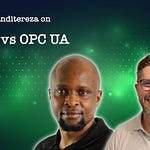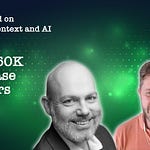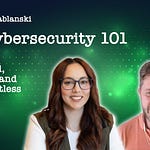📣 Quick note before we dive into all things open source:
In our last episode, we announced the launch of the ITOT.Academy: a live on-line learning experience for professionals navigating the complex world of IT/OT collaboration.
Our early bird seats are filling up fast. If you’re serious about gaining practical skills (not just theory), now’s the time to secure your spot. Don’t wait too long, the first cohorts start on August 29 and September 5 (each cohort consists of six 2 hour sessions and you receive all recordings).
👉 Full training program and registration via ITOT.Academy
In this episode of the IT/OT Insider Podcast, we sit down with Alexander Krüger, co-founder and CEO of United Manufacturing Hub (UMH), to talk about something that’s both old and revolutionary in the industrial world: open source software.
This isn’t about hobby projects or side experiments. It’s about why open source is playing an increasingly important role in how factories move data, scale operations, and reduce vendor lock-in. Alexander brings both a technical and business perspective and shares what happens when a mechanical engineer dives deep into the world of cloud-native data infrastructure.
Not all Open Source is created equal
Most industrial companies still equate reliability with paying a vendor and signing a service-level agreement. But Alexander challenges that mindset. His team originally built UMH because they were frustrated with how hard it was to try, test, and scale traditional industrial software.
“We just wanted to get data from A to B in a factory, but realized that problem isn’t really solved yet. So we made it open source.”
Alexander is quick to point out that choosing open source doesn’t automatically mean less risk, but it does mean different trade-offs. Key factors include:
Licensing clarity
Community health (Is it maintained? Is it active?)
Governance (Who controls the roadmap? What happens if they change direction?)
He even brings up the infamous example of vendors repackaging tools like Node-RED under different names, then charging for them without giving proper credit (or worse, shipping outdated versions).
“If you’re already bundling open source into your software, why not be honest about it?”
What about reliability?
If you’re an OT leader, you might still worry: who do I call at 2 a.m. when something breaks?
Alexander’s answer: you should be asking that question about any software, open or proprietary. Because often, what fails isn’t the software itself, it’s the integrations someone built in a rush, or the one engineer who knew how things worked and then left the company.
With open source, there’s at least transparency, control, and the ability to maintain continuity. You’re not locked out of your own systems.
The Human Side: The rise of the hybrid engineer
One of the most interesting parts of the conversation was about who will make this all work. Alexander sees a new kind of engineer emerging: someone with a background in OT, but who enjoys learning IT concepts, tinkering with Docker, and embracing DevOps practices.
“We’re looking for people who used to live in TIA Portal but now run state of the art home automation in their free time.”
This isn’t about turning everyone into a software developer. But it is about building a culture where people are open to learning from both sides and using modern ways of working and new tools to solve old problems.
Stay Tuned for More!
Subscribe to our podcast and blog to stay updated on the latest trends in Industrial Data, AI, and IT/OT convergence.
🚀 See you in the next episode!
Youtube: https://www.youtube.com/@TheITOTInsider
Apple Podcasts:
Spotify Podcasts:
Disclaimer: The views and opinions expressed in this interview are those of the interviewee and do not necessarily reflect the official policy or position of The IT/OT Insider. This content is provided for informational purposes only and should not be seen as an endorsement by The IT/OT Insider of any products, services, or strategies discussed. We encourage our readers and listeners to consider the information presented and make their own informed decisions.





